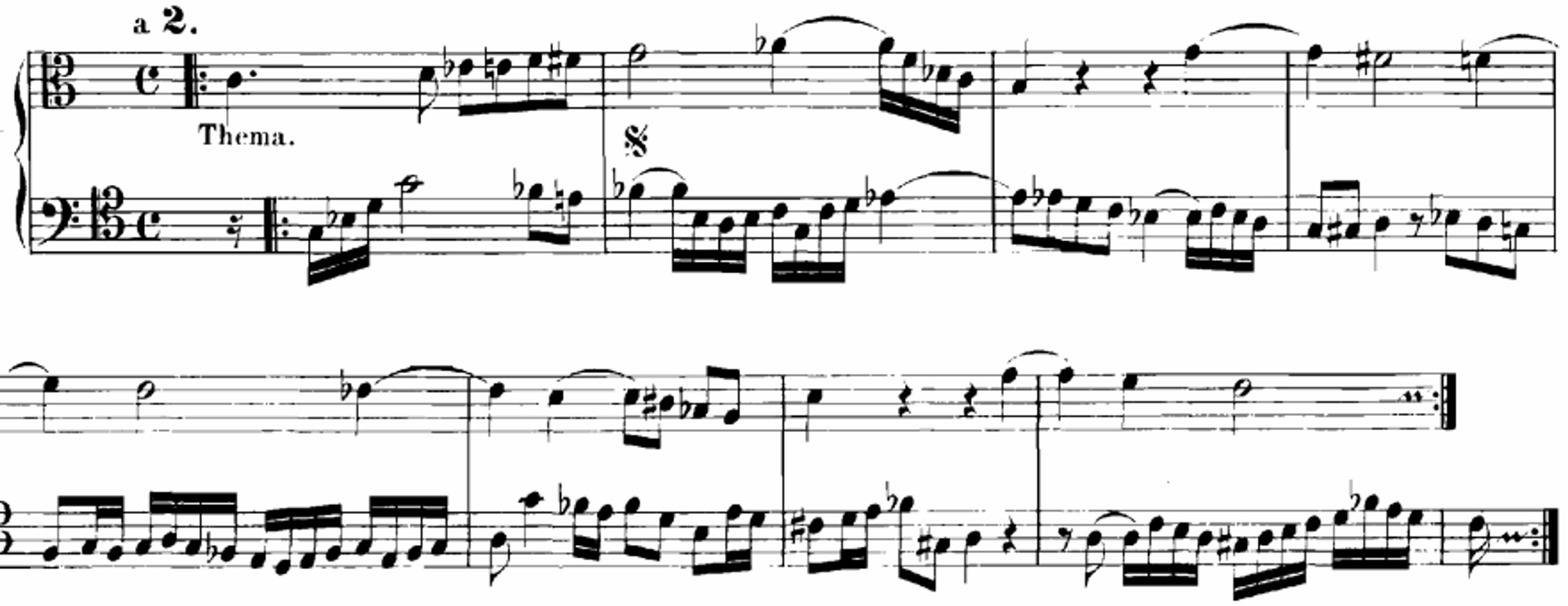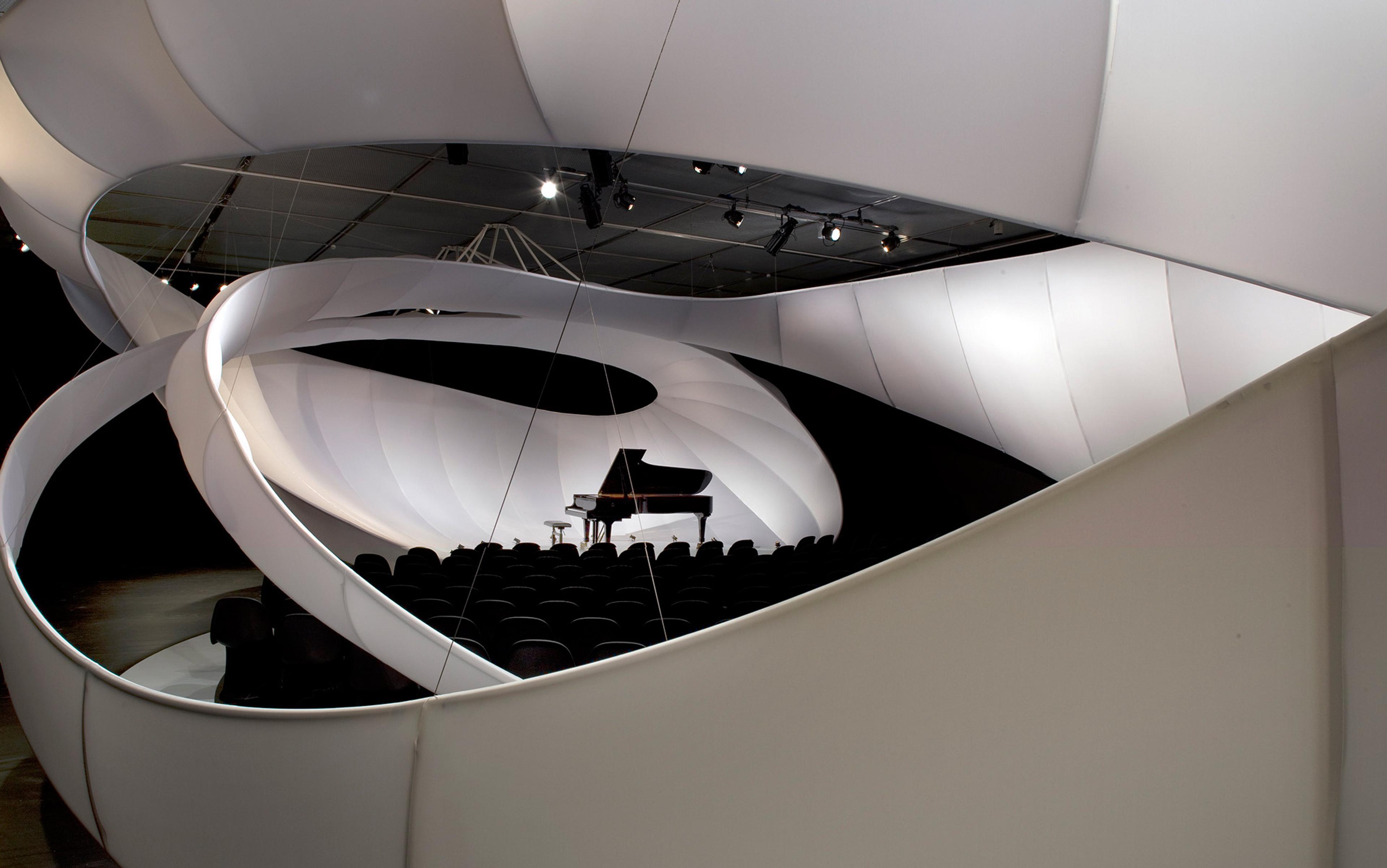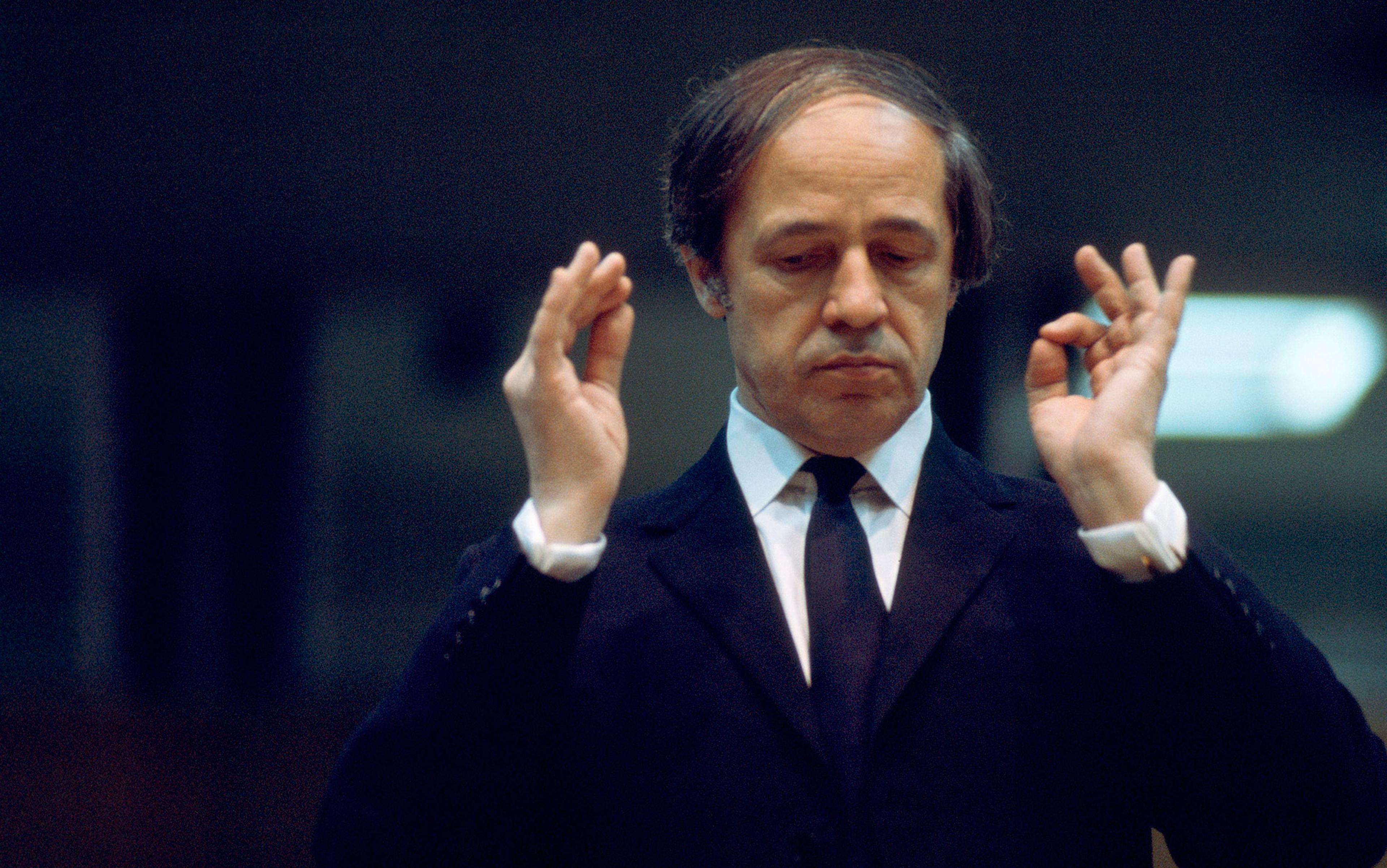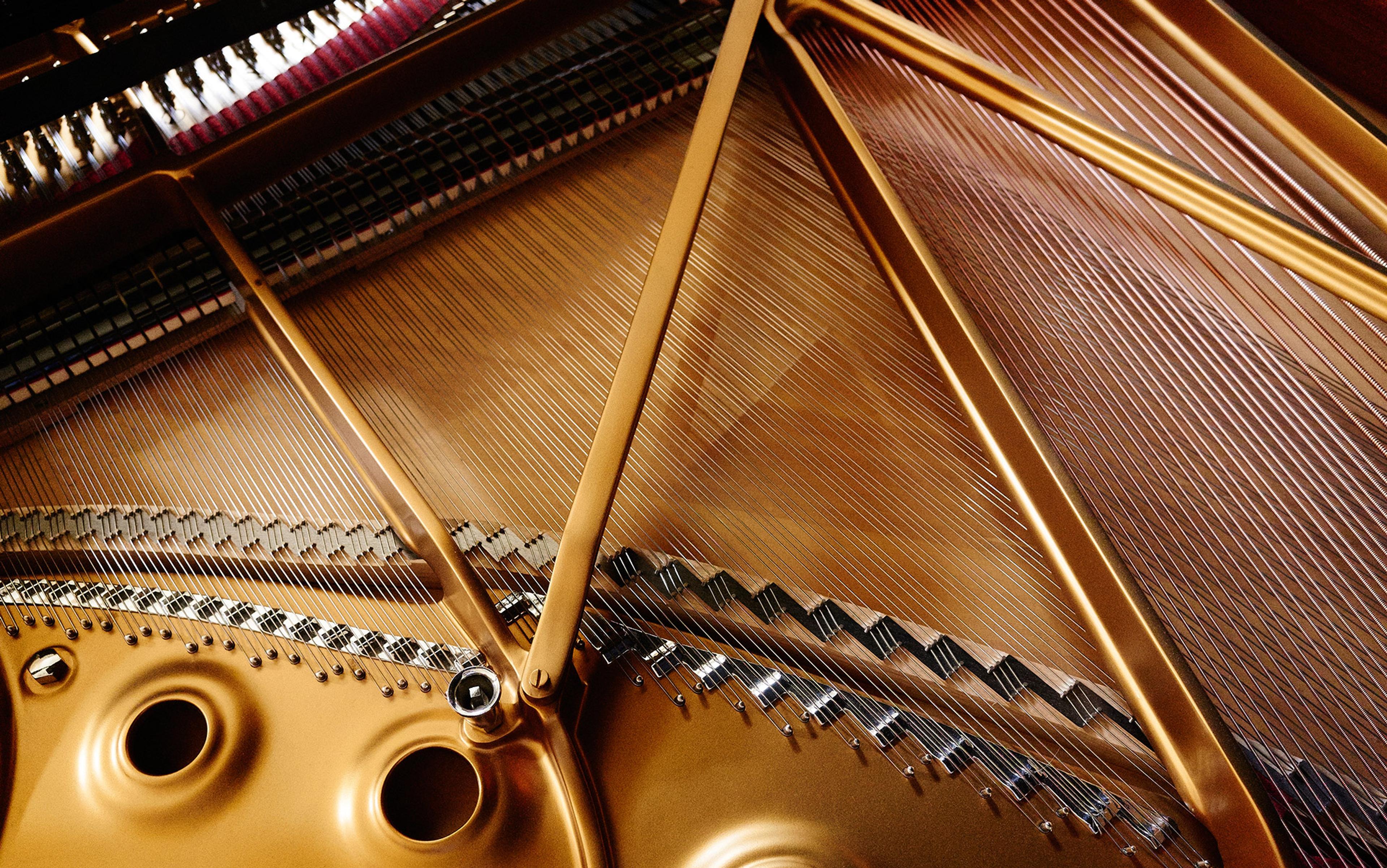Achilles: Frankly, I’m a little confused by the title. After all, what do Copper, Silver, and Gold have to do with each other? … Now if the title were, say, Giraffes, Silver, Gold, or Copper, Elephants, Gold, why, I could see it…
Tortoise: Perhaps you would prefer Copper, Silver, Baboons?
Achilles: Oh, absolutely! But that original title is a loser. No one would understand it.
Tortoise: I’ll tell my friend. He’ll be delighted to have a catchier title (as will his publisher).
From Gödel, Escher, Bach: An Eternal Golden Braid (1979) by Douglas Hofstadter
Twenty years ago, in the preface to the 20th-anniversary edition of his classic book, Douglas Hofstadter marvelled at how misunderstood its thesis has been. A treatise on the nature of consciousness, it is often wildly misconstrued as an exploration of how ‘math, art, and music are really all the same’. But one likely source of the confusion is in the name – which is, at the same time, a big reason for the book’s lasting popularity: Gödel, Escher, Bach: An Eternal Golden Braid, or GEB for short, sounds like a promise of just such a dazzling, cosmic counterpoint. Another likely culprit is Hofstadter’s own musings about music. While M C Escher’s artwork elegantly (and literally) illustrates many of the book’s themes, Hofstadter’s attempts at justifying the inclusion of Bach are mostly banal and often badly off the mark.
There are good reasons for GEB’s fame besides the sexy and marketable title, though. In its attempt to build a grand theory of minds and meanings, the book discusses an eclectic range of topics and, at its best, does it in a genuinely enlightening way. It is obviously an inspired work, even if the fundamental case it sets out to make falls flat. Like most attempts at ‘explaining’ consciousness, GEB is rooted in a category mistake: it treats our phenomenological core as just another phenomenon, making the book an 800-page exercise in begging the question. But it’s a stimulating 800 pages, riffing on fractals, Zen koans, computer languages, quantum physics and much more. To his credit, Hofstadter at least senses that the volume of a phonebook is required if you claim to be adding something to this perennial conversation.
At the centre of GEB’s thesis is a concept that Hofstadter calls the ‘strange loop’, a system of tangled hierarchies, often self-referential and paradoxical – and one that, in his view, gives rise to our sense of selfhood. Like with any complex system of logically governed symbols, his argument goes, the symbol-manipulation of our brains leads (as the 20th-century mathematician Kurt Gödel showed) inevitably to self-reference. This is what self-awareness is, in Hofstadter’s final analysis: the ability of our internal, neurally processed formal system to reference itself, to ‘talk about itself’, as a property that is mathematically predetermined to emerge.
An important strand in GEB’s exploration of such strange and loopy entities is recursion. A simple and intuitive illustration of the concept, and one that the book starts out with, is of a story inside a story: a self-similar structure, in which each new hierarchical level is nested within a lower one. This recursive nesting can either continue indefinitely (as in fractal geometry) or until the levels ‘bottom out’ (as with the leaves of a fern, or the 1,001 tales of Arabian Nights). Nature and human artifacts abound with examples of recursion and self-similarity, and Hofstadter exploits a great many to explain the concept. With his third titular character, however, he struggles.
In an effort to keep Bach relevant to the discussion, Hofstadter takes an oddly specific example (‘the gigue from the French Suite No 5’) and goes on to give descriptions that are so general they could apply to any number of tonal pieces. His main point is that the way the music moves through different keys – a process known as modulation – is recursive. But key changes are not organised in anything resembling stacks in computer languages, as Hofstadter would have it, with each new level nested within the previous one; nor do they create the expectation of ‘returning back in a reverse order’. Modulation is a defining characteristic of tonal music: it is not unique to Bach, nor is it a recursive phenomenon.
The Mandelbrot set fractal exhibits recursion in the abstract. Created by Wolfgang Beyer with the program Ultra Fractal

Ferns are an example of recursion in nature. Courtesy Wikimedia
Music is full of recursion, though. Schenkerian analysis – one of the dominant theoretical frameworks for tonal music (since before GEB was published) – deals with hierarchical harmonic structures that follow similar principles from the deepest levels to the surface. Other musical parameters, such as rhythm, exhibit recursion too. It would be easy to come up with any number of better examples than key changes in a random gigue. On the other hand, as GEB takes pains to demonstrate, recursion is everywhere: in plants, computer code, quantum particles, human languages. So whence the ‘B’?
More than anything, Bach’s name in the title represents a missed opportunity: his music could, in fact, beautifully serve the role that Hofstadter wanted to assign it. Beyond its relevance to recursion, it can help us think about the book’s biggest underlying subject matter, that of meaning – though it might lead us to a very different perspective from the one Hofstadter intended.
A fascinating instance of musical recursion has to do with the historical process that led to the emergence of the Bach style. It is, in fact, not possible to fully understand how Bach’s counterpoint works without knowing something about its evolution.
Present-day study of counterpoint is centred around two distinct idioms – 16th-century vocal polyphony, and the instrumental counterpoint of the late Baroque era – and the two composers who are considered the highest incarnations of these idioms: Giovanni Pierluigi da Palestrina and Johann Sebastian Bach, respectively. Like most composers to this day, Bach is known to have studied the counterpoint of Palestrina, referred to already back then as stile antico, the ‘ancient style’, and it’s easy to see the continuum: in the spirit of GEB, one could point out many similarities between two representative examples from an isomorphic perspective.
Isomorphism, another important theme of the book, means similarity of form – the kind you could observe by, say, mapping the human anatomy onto another animal. Take the opening Kyrie from Palestrina’s Missa Brevis and the exposition of Bach’s Fugue in D Major from The Well-Tempered Clavier II:
Kyrie from Palestrina’s Missa Brevis; the exposition of Bach’s D Major Fugue from WTC II
On the surface, the similarities are obvious. Both works have four voices. Both employ imitative counterpoint: each voice, temporally staggered, begins with the same theme. Even the registral distances between the theme entries are similar.
A much less obvious correspondence takes place between the very beginning of Bach’s fugue and the tailend of Palestrina’s Kyrie. From a superficial, isomorphic point of view, these two moments couldn’t be less alike. The first one, an opening statement, introduces the theme: a single line with no harmony. The second, a concluding cadence, has all four voices at play – and for the first and only time, just seconds before the music ends, we no longer hear Palestrina’s theme in any of them.
As it happens, though, this latter progression of harmonies is embedded in Bach’s single melody:
Bach’s fugue theme; Palestrina’s final cadence
Of course, I have chosen these examples to make a specific point. But the correspondence goes beyond just the melody ‘fitting’ on top of the cadence. Listen to Bach’s fugue theme again and notice how you can actually hear all the four voices from the tailend of Palestrina’s Kyrie in this one melodic line. What accounts for this mysterious connection?
Just as you can see a fern’s shape in a single individual leaf, you can hear counterpoint in just one line of Bach
A major characteristic of the earlier Renaissance music is that the thinking behind it is primarily linear: the elegance of the individual melodic lines matters most, while the resulting harmonic progressions are less significant. A couple of hundred years lapsed between these two highpoints of counterpoint, during which our culture turned its collective attention from the horizontal dimension (melodies) to the vertical (harmonies). In the interim period, music was largely homophonic – consisting of one primary melodic line and accompaniment – and gradually, a syntax emerged to govern the accompanying chords. The resulting idiom is known as functional tonality, which dominated Western music until the beginning of the previous century. Styles as dissimilar as those of Bach and Mahler follow the same fundamental principles.
A cadence is, by definition, a conclusive moment: a phrase ending in which the harmonies exhibit a heightened sense of direction. In a cadence, the chords’ ‘gravitational pull’ leads back to the stasis of the central chord (known as the tonic). In the early Baroque period, the new harmonic syntax came about from an effort to sustain this feeling of harmonic drive throughout the music, with a set of principles that dictate which chords can be followed or preceded by which other chords.
Bach never wrote about music theory or compositional technique, but he was aware of this development; we know this from (among others) one particularly devoted student, Johann Kirnberger, a noted German composer and theorist in his own right. Whereas in previous times the study of counterpoint started out with composing a single line, proceeding to two-, then three- and four-part writing, this practice was almost entirely reversed with the advent of 18th-century polyphony. Kirnberger, following in the footsteps of his great teacher, writes:
It is best to begin with four-part counterpoint because it is hardly possible to write in two or three parts perfectly until four-part writing has been mastered. For since the complete harmony is in four parts, something must always be missing in two- and three-part works. [emphasis mine]
Or, as the Danish musicologist Knud Jeppesen puts it in his seminal work Counterpoint (1931): ‘Kirnberger no longer begins with the line, as did his predecessors, but with the chord; and yet, he wants polyphony.’
As a result, Bach’s music has a very complex – and recursive – relationship to its predecessors: one type of polyphony gave rise to a novel way of treating chords, and from the resulting harmonic grammar, a wholly new way of writing melodies emerged. And yet the resulting counterpoint seems, on its surface, deceptively similar to the older kind. Just as you can see a fern’s shape in a single individual leaf, you can hear counterpoint in just one line of Bach.
GEB is peppered with images: both mental and concrete, some of them effective, others clumsy. One particularly awkward passage summons both Escher and Bach to illustrate the concept pair figure and ground as it relates to mathematics. If, for example, the set of all prime numbers is the figure, then all composite numbers would be its ‘negative space’ or the ground. The topic becomes fascinating, with sets and formal systems that can only be described as the ground against a well-defined figure. Once again, Escher’s art makes for a beautiful illustration, as in his woodcut Sky and Water I (1938).
As for Bach, Hofstadter writes: ‘In music, too, there is figure (melody) and ground (accompaniment),’ then goes on to claim that the accented beats of a measure are analogous to the figure, while the off-beats would be the ground. None of this makes much sense, and the whole passage – replete with many more inaccuracies – serves only to confuse the point.
Here, too, there is a way in which Bach could be evoked, once more against a historical backdrop. It has been argued (notably by the music theorist George Perle) that early atonal music was not based on a coherent, sovereign system. Rather, much of it grew out of a negation of traditional tonality, for which Bach remains the ultimate pedagogical and artistic lodestar. To simplify a bit, for composers such as Anton Webern, what was previously forbidden turned into raw material for what to require, and vice versa. In this way, atonal music can be said to have emerged as the clearly identifiable, yet ill-defined, ‘negative space’ to Bach’s figure.
Many other topics that the book attempts to tackle, though, are particularly ill-suited for musical analogies. At its worst, GEB parades mental images that are incoherent to the point of entirely defeating the purpose of metaphor – as in the following description of how ribosomes translate messenger RNA into proteins, which Hofstadter calls a ‘molecular canon’:
The corresponding image in music is a rather fanciful but amusing scenario: several different copyists are all at work simultaneously, each one of them copying the same original manuscript from a clef which flutists cannot read into a clef which they can read. As each copyist finishes a page of the original manuscript, he passes it on to the next copyist, and starts transcribing a new page himself. Meanwhile, from each score emerging from the pens of the copyists, a set of flutists are reading and tooting the melody, each flutist delayed with respect to the others who are reading from the same sheet.
Whatever that is, it’s not a canon – it’s not even a thing. And depending on your definition, it is not really even music. Clearly, there is a limit to the usefulness of musical analogies.

Canon per Tonos from J S Bach’s Musical Offering. Public domain
On the topic of actual canons, Hofstadter attempts to conjure an Escherian illusion of his own when he draws parallels between the Canon per Tonos from Bach’s Musical Offering and Escher’s lithograph Waterfall (1961). While the image depicts a stream that keeps flowing downward in a perpetual cycle, each phrase of Bach’s canon ends by modulating up a whole step, eventually arriving back in the home key of C minor. This makes for a strange and open-ended effect – but, according to Hofstadter: ‘Bach indubitably also relished the implication that this process could go on ad infinitum’:
To emphasise its potentially infinite aspect, I like to call this the ‘Endlessly Rising Canon’. In this canon, Bach has given us our first example of the notion of Strange Loops. The ‘Strange Loop’ phenomenon occurs whenever, by moving upwards (or downwards) through the levels of some hierarchical system, we unexpectedly find ourselves right back where we started.
Except that we don’t: arriving an octave higher is not the same as being back to square one. It is an unusual structure, to be sure, but no trick comparable to Escher’s visual paradox is present here. The canon could go on indefinitely but not forever; after a while, it will become unplayable on human instruments, and audible only to dogs.
Moreover, virtually all tonal compositions end where they started from, and nothing prevents us from listening to the whole process again, and again. Why would that imply infinity? As it happens, this is something Escher had strong opinions about. Escher adored Bach, and was aware of the parallels between his own tessellated images and Bach’s mathematically complex polyphonic works. But to Escher, it was clear that music, the ultimate temporal art form, cannot depict infinity:
How could a composer succeed in evoking the suggestion of something that does not end? Music is not there, neither before it begins nor after it ends. It is present while our ears receive the sound vibrations of which it consists. A stream of melodious sounds that continues without interruption for a day does not produce a suggestion of eternity, but of fatigue and boredom.
The many metaphors, symbols and analogies in GEB are not only meant to illustrate but are part of its actual subject matter: much of the book is about conceptual mapping. But when it comes to artificial intelligence (AI), Hofstadter treats it not as a reflection but a manifestation of the real thing. While he concedes that our rudimentary computer programs give us, at best, ‘images of what thought is’, he describes ‘a glimmering sense that real thought’ is merely made up of ‘longer, much more complicated trains of symbols in the brain’. Early computer pioneers, he writes, would experience ‘an awesome and mystical sense of being in the presence of another kind of “thinking being”.’
Escher described a similar sense of awe at how some of his images were born, as something akin to being
a spiritualist medium, controlled by the creatures which I am conjuring up. It is as if they themselves decide on the shape in which they choose to appear. They take little account of my critical opinion during their birth and I cannot exert much influence on the measure of their development.
This type of quasi-mystical experience – of channelling something rather than constructing it – is common among artists of all stripes. The same sensation probably underlies the belief within various magical traditions that capturing someone’s likeness will capture part of their soul.
Escher was in awe of the powers residing in the depths of his own mind that, in order to be unleashed, required at least a pencil and paper. It would have been silly of him to conclude that it was the pencil-and-paper technology that had assumed a will of its own. But it is precisely that kind of naive reductionism that underpins much of AI hype to this day, as it did 40 years ago when Gödel, Escher, Bach first came out. Dressed in a cloak of rationalism, it is more akin to present-day voodoo.
Graphic artists study reality around them while students of composition strive to understand and mimic Bach
There is something intuitive and aesthetically pleasing about Hofstadter’s concept of the ‘strange loop’, an entity born out of meaningless symbols, which cannot help but reference itself. But as a mechanism for how sentient minds emerge, such a conclusion does little more than restate the premise of GEB’s line of questioning. ‘Symbols’ and ‘information’ can’t be the basis for an explanation of consciousness: in order for something to be meaningful – for it to be a ‘symbol’ in the first place – you need to postulate awareness. Formal systems and computer programs, like works of art, are an echo of our being, paradoxes and all. It might make sense to describe them in anthropomorphic terms on occasion; but that just doesn’t add up to an account of causality.
In short, the book is an attempt at giving an ‘explanation for meaning’, which, it doesn’t take too much reflection to see, is a notion rooted in circular logic. Bach’s music can serve as a particularly striking manifestation of this paradox. It gives one the experience not just of beauty but of something profoundly concrete: more real and solid than the chair I’m sitting in. (There’s something uncanny and very apropos about the parallel between how graphic artists study the reality around them – perspective, anatomy, lighting, and so on – while students of composition strive to understand and mimic Bach.) At the same time, there is no object outside of a fugue that is being referenced by it, no semantic content, no translation that would make it intelligible to a listener not already immersed in the tradition. Someone with the ability to hear and understand the organising principles behind it without any aesthetic response could – like a nonbeliever observing a religious rite – say: ‘I hear the music for what it really is: a series of meaningless pitches.’
Hofstadter speculates that perhaps there is such a thing as general, universal intelligence, in which case an advanced alien civilisation might be able to decipher the intrinsic meaning of Bach’s music by analysing the grooves on a recording. But a work of art is not a message that encodes for emotions any more than a sunset is, and there is no correct way of interpreting either. A hallmark of great art is that we all perceive it personally and differently. Listening to a piece of music, quite like writing one, is a creative act: both are part of an ‘acoustic language game’ in the Wittgensteinian sense, whose ultimate frame of reference is itself. It involves following, altering, breaking and making up the rules as you go along, and those rules or principles are meaningful only in relation to the organised sound, and vice versa. How’s that for a strange loop?
To put it another way: Bach’s music can really hammer home that the substrate of meaning is meaning. This is the crux of the paradox that GEB tries, in vain, to solve.






